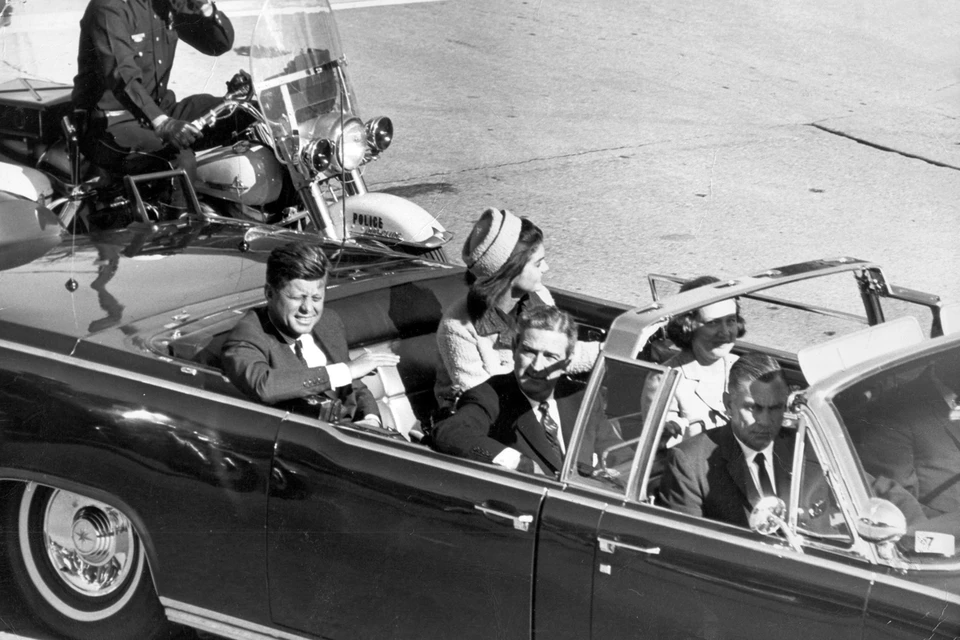
Unexpected revelations are like an attempt to make money by speculating on a popular topic and increasing circulation
Photo: EAST NEWS
On November 22, 1963, in Dallas, Secret Service agent Paul Landis, who was guarding the family of John F. Kennedy, was driving behind the US President’s limousine, standing on the running board of the escort car. He claims that he still cannot forget the events of that day. 60 years later, Landis, who was in the thick of things, wrote a book, “The Last Witness,” in which he questions the details of the official version, again giving rise to controversy about the second shooter.
The Warren Commission’s official version of Lee Harvey Oswald as the sole shooter is based on the so-called “magic bullet” theory. Allegedly, one of the three bullets fired by Oswald was able to injure John Kennedy through an intricate trajectory, and then inflict a number of injuries on Texas Governor John Connally, who was sitting in front, miraculously hitting the back, chest, wrist and thigh at the same time, and still remain practically undeformed. Using modeling, experts have determined that this is theoretically possible, but no one has yet provided convincing evidence of the presence of a second shooter.
However, Landis, who suddenly spoke up, revealed a detail that again resurrects the version of the killer’s accomplice. That same “magic bullet” was found in the hospital, on Governor Connally’s stretcher, and, as was believed all this time, came out of his body during transport. This fact served as the starting point for the whole theory. The eyewitness agent claims that he found this bullet on Kennedy’s seat in the car and took it as evidence to give to the doctors, but in the confusion he left the wounded president on a stretcher, and from there it somehow migrated to the governor’s body. Landis suggests that the bullet hit Kennedy in the back, but did not penetrate deeply, so it jumped back out before the president’s body was removed from the limousine.
“If what he says is true, which I am inclined to believe, it will likely reopen the question of the second shooter,” said lawyer James Robenalt, who has studied the high-profile murder in detail. As noted, the new testimony of 88-year-old Landis contradicts the reports that he wrote immediately after the tragedy. Moreover, in those rare interviews that he gave earlier, there was also not a word about the bullet. The Warren Commission, for some unknown reason, did not question him as one of the eyewitnesses. The American himself explains that he compiled the reports in a state of shock, so he could have missed details, and later he was afraid to admit that he had moved evidence. In addition, the murder that occurred and the subsequent suffering of the Kennedy family, which unfolded before the eyes of the young agent, undermined his psychological state. Six months later, he retired from the Secret Service and tried to immerse himself in the details of that day as little as possible.
Only after reading the book “Six Seconds in Dallas” with the version about several shooters, which was given to him by an acquaintance in 2014, Landis began to think about the contradiction of his memories with the official version.
After several years of discussions with friends and experts, he decided to tell everything he saw in his memoirs, which will be published this October. The fact that Landis remained silent for so many years and now decided to speak out does not speak in his favor: unexpected revelations look like an attempt to make money by speculating on a popular topic and increasing circulation. But why then wait until old age? Everyone who wanted it had long since trampled on and made money from the events of that day. But, as a New York Times correspondent who spoke with Landis before the book’s release notes, he doesn’t look like a crazy old man. The eyewitness to one of the most notorious and mysterious murders of the 20th century assures that he is not imposing any conclusions, and writing the book was a “huge emotional relief” for him.